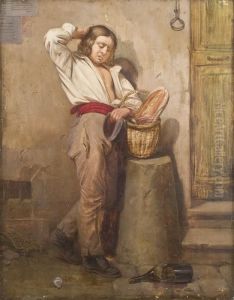A. Delaunay Paintings
Robert Delaunay was a French artist who co-founded the Orphism art movement, known for its use of strong colors and geometric shapes. Born on April 12, 1885, in Paris, Delaunay was largely self-taught, though he did attend some classes at the École des Beaux-Arts. His early work was influenced by Neo-Impressionism, and he painted landscapes in the style of the Post-Impressionist artists.
However, Delaunay's true breakthrough came with his development of Orphism, alongside his wife Sonia Delaunay and other artists like František Kupka. Orphism was an offshoot of Cubism, focusing on pure abstraction and bright colors. Delaunay's series of paintings, 'The City of Paris,' 'The Eiffel Tower' and 'Saint-Séverin,' are prime examples of this movement, combining a Cubist approach to form with a vivid, expressive use of color.
During World War I, Delaunay and his wife moved to Spain and then to Portugal, where they continued to develop their distinctive style. They returned to Paris in 1921 and became involved with the Dada movement and later with the Abstraction-Creation group. Throughout the 1920s and 1930s, Delaunay continued to explore abstraction, although he also undertook a series of projects that veered towards commercial art, including set and costume design for theater and film, as well as advertising.
Robert Delaunay died from cancer on October 25, 1941, in Montpellier, France. His legacy lives on through his influence on subsequent generations of abstract artists, and his work is held in many major museums around the world. Sonia Delaunay, an accomplished artist and designer in her own right, carried on the ideals of Orphism long after his death and continued to promote his artistic vision.
